Summarized from a consultation originally recorded on June 10th, 2025.
Annmarie Skin Care Skin Consultations are FREE, virtual group sessions, hosted live by our in-house skin experts, to provide personalized recommendations and directly answer any skin care related questions. Learn more about our skin consultations.
Kate Kate – Annmarie Skin Care In-House Esthetician: Okay, let's get into it. Let's start talking about the fun stuff. So, when I looked through the surveys, I saw that most of you filled them out. A few of you may not have gotten a chance yet, but from what I gathered, the main concerns in this group are dry and sensitive skin, visible signs of aging, and the appearance of pigmentation or dark spots. Those seemed to be the top priorities. But I want to open it up—if there’s anything else you didn’t get a chance to include in the survey that you’d like to share or want me to prioritize during our chat, please feel free to speak up. I’m happy to support you.
Customer: I have a little question—about nose pores and blackheads.
Kate – Annmarie Skin Care In-House Esthetician: Mm-hmm, okay. We can definitely prioritize that. Do you feel like your skin is oilier around your nose?
Customer: Yes, oilier in the nose area.
Kate – Annmarie Skin Care In-House Esthetician: Okay. Is your skin more of a combination type then? Like, are you drier in other areas?
Customer: Yes—drier on my lower cheeks, but oilier on my nose and upper cheeks.
Kate – Annmarie Skin Care In-House Esthetician: Got it. That’s helpful to know. I’ll definitely factor that in when recommending products for you. Also, I saw in the chat that some of you are looking for glow-boosting tips, so we’ll talk about ways to really bring out radiance in the skin. I have some scrubs and masks that can be really helpful for that. And, quick apology—I sound a little congested because I’m just getting over a cold.
Customer: I just wanted to say—I have redness, but it’s not acne. It’s not pimples either—it’s more dry and flaky. I think it’s perioral dermatitis. Are you familiar with that?
Kate – Annmarie Skin Care In-House Esthetician: Yes, I am!
Customer: Creams don’t seem to help. The only thing that works is antibiotics, but I don’t want to take those, so I’ve just been dealing with it. It flared up and now it’s all around my nose—it used to just be down here.
Kate – Annmarie Skin Care In-House Esthetician: Gotcha. Okay. I do have a couple of products in mind that could help support your skin in that area. We’ll talk through those in a bit.
Customer: Also—your skin looks so good! Like, no lines under your eyes. How do you get rid of those? I don’t want to do Botox.
Kate – Annmarie Skin Care In-House Esthetician: Thank you! One of my favorite tools for that is a gua sha, our Nephrite Gua Sha. I use ours—it’s our custom-designed version from Annmarie Skin Care—and I use it almost daily. There are a lot of gua sha tools out there, but ours has some unique features, like a comb edge and a lip at the top for more targeted work. I usually do it for about five minutes as part of my morning routine. I run it along the sides of my face, along my neck, and use the comb part across my forehead—especially in between the brows where I can get a bit of creasing. Even with limited time, just that short daily ritual helps a lot with puffiness and the appearance of lines. It works with the fascia—sort of the connective tissue under the skin—to help encourage a more lifted, sculpted look. This can be really helpful if you're experiencing puffiness, visible lines, or areas like the jawline and neck that might start to look saggy over time. Sometimes that’s due to gravity, but often it’s from built-up tension in the neck pulling the skin downward. When I do gua sha, I work up the front of the neck and then sweep down the back a bit. That direction really helps encourage flow.
Customer: So that really helps with lines?
Kate – Annmarie Skin Care In-House Esthetician: It really does. I always hesitate to share my age, but I’m almost 40—and while everyone’s aging journey is different, I’ve found that consistent gua sha use makes a big difference. It’s less about how long you do it and more about doing it regularly. Even if I only have time for a quick session, it helps move stagnant fluid, especially under the eyes, where we tend to hold puffiness. There are a lot of ways to use the tool. If you're interested, let me know in the chat—I can send you a follow-up email with video tutorials. We host live calls every so often where we walk through the techniques together, and I’d be happy to share those resources with you.
Customer: Does it—may I ask a question? Does it matter what the gua sha tools are made of? Like if you have rose quartz or jade—does that matter?
Kate – Annmarie Skin Care In-House Esthetician: So, rose quartz is a good one. Ours is jade. The reason we went with jade—this is certified nephrite jade, so it’s not jade-like or imitation jade. The whole thing is real jade.
First of all, the weight of it—the way jade stone rests and the volume of it with the size of this tool—is really nice. It’s got a good kind of pressure to it. Another unique quality of jade is how it holds onto temperature. So for me, most days I’m using it to help de-puff, and when I pick it up at room temperature, it’s already a little cool, and it tends to stay cool throughout the whole treatment—or most of it.
But you can also use it warm. You could dip it into warm water and let it absorb the temperature. (Just make sure it’s not too hot—you don’t want to scald the skin!) Then you can use it to help relax facial tension or work through certain areas of the face. It really retains the warmth.
There are a lot of options out there—some are even metal—but those are some of the reasons why we chose the jade, specifically certified nephrite jade. Good question!
Customer: Thank you!
Kate – Annmarie Skin Care In-House Esthetician: You’re welcome.
Customer: Does it help with redness? Like, I get a lot of redness in my cheeks.
Kate – Annmarie Skin Care In-House Esthetician: Yeah, I don’t know that it would necessarily help with redness directly. If you're someone who flushes easily, you might even notice your skin looks a little pinker after using it—especially if your skin is particularly sensitive.
It’s not necessarily targeting things like capillary appearance, and it doesn’t actively soothe redness or irritation. I’d look more toward certain skin care products to help with that rather than relying on the gua sha tool itself.
Customer: Okay.
Kate – Annmarie Skin Care In-House Esthetician: Yeah. Cool.
Customer: Thank you.
Kate – Annmarie Skin Care In-House Esthetician: Mm-hmm! Cool—let’s start building a routine.So, when we’re talking about a pretty basic routine with Annmarie Skin Care, generally speaking, we’re looking at a cleanser, a toning mist, a serum, and a moisturizer—either an oil or a cream. These four, used in that order, form the foundation of your routine. We also have scrubs, masks, and concentrated boosters that I’ll talk about, but thinking of these four as your anchors can help you decide what’s most important to invest in today. Also, as I’m talking, you’ll see that some products have a tan label and some have a black label. The tan label is our Signature Collection, and the black label is our Wild Alchemy Collection. The Wild Alchemy Collection tends to be more targeted—it’s laser-focused on addressing visible signs of aging. It often includes more exotic or harder-to-source ingredients and may be more advanced in terms of formulation. That’s not to say the Signature Collection doesn’t support mature skin—it absolutely does. It’s just a little broader in focus. So the Signature Collection includes options for sensitive skin, combination skin, and blemish-prone skin, in addition to those designed to support the look of smoother, more supple skin. So, with that in mind, let’s start at the top.
The first cleanser I want to highlight is the Aloe Herb Cleanser. I think at least one of you has tried this if you’ve used our Clean Beauty Trial Kit. The texture of this one is very soft—almost like a lotion. None of our cleansers contain sulfates, so they won’t foam or lather like conventional cleansers. Where the cleansing comes from is the aloe. When aloe meets water, it takes on a kind of emulsifying texture. So while it doesn’t suds, you’ll still feel that it’s cleansing. The Aloe Herb Cleanser is formulated to be very gentle. If you’re someone who experiences irritation, sensitivity, or reactivity, this is extremely supportive. It’s also crafted with ingredients that help soften the skin and smooth the appearance of fine lines. I often recommend this one for mature, normal-to-dry, or very sensitive skin types. It has a light, pleasant scent—kind of a coconut-lemon vibe. Nothing too strong. The skin feels really balanced afterward. Not tight, not greasy, and it helps even out skin that has both oily and dry zones. You don’t need a lot—usually two to five pumps. I always bring it down to my neck and chest, too, as part of keeping that area healthy-looking.
The next cleanser I want to call out is the Phytonutrient Cleanser. This one has a similar texture to the Aloe Herb, but it’s a little richer. It’s especially great for normal to mature skin and dry skin. It includes mango seed butter, which gives it a more nourishing feel, and also includes our signature serum blend, unique to this product. That blend helps soften the appearance of fine lines and supports skin resilience. It also contains a small amount of malic acid, which is a fruit-derived exfoliant. It’s very gentle—you typically won’t feel a tingling sensation—but it’s helpful for those looking to improve the look of uneven skin tone or discoloration. The scent of this one leans mango—it smells really good if you like that kind of fruity, rich scent. It’s great for normal, dry, or combination skin. I do want to mention: if you’re sensitive, this one can feel a little bit more activating. Some of my sensitive-skin clients use it just once or twice a week. So just listen to your skin. If you’re highly reactive, this might be something you rotate in occasionally, rather than daily.
Customer: Yeah, that was going to be one of my questions—can that be used in between the other one, or with it? I’m really sensitive and I do react to a lot of stuff. I did get the trial of the Aloe…
Kate – Annmarie Skin Care In-House Esthetician: Mm-hmm.
Customer: Yeah, and I’ve used it a couple of times. I haven’t used it fully yet because I wanted to do this Zoom before really getting into it, but I did like the way it feels. It makes my skin feel really smooth.
Kate – Annmarie Skin Care In-House Esthetician: Yeah, awesome, awesome. And to answer your question—yes, alternating cleansers is very common. Some people find one they love and just stick with it, but a lot of people like having another one on hand, especially depending on the season. For example, some people switch to something more clarifying in the summer or warmer months, depending on their skin’s needs or where they live. So yes, having cleansers to alternate between is definitely normal.
Customer: Well, I’m in Texas, so we have a lot of humidity.
Kate – Annmarie Skin Care In-House Esthetician: Mm, yeah. You might find yourself reaching for that one more than you think. I find it’s a little less balancing than the Aloe Herb Cleanser—it cuts through oil in a different way. It still works well for dry skin, but for the driest, most sensitive skin types, I usually lean toward recommending the Aloe Herb Cleanser. If you're just slightly below that, then that’s where we might explore another option.
Customer: Okay, cool. Thank you.
Kate – Annmarie Skin Care In-House Esthetician: Yeah. One more I want to highlight here is the Restorative Cleansing Oil. This one is for very dry skin types, and I believe at least one person in their survey mentioned having very, very dry skin. The feel of this one is rich—it’s a blend of luscious oils, including olive, manuka, and castor oils, plus some infused herbs and florals. It feels super emollient, really rich. Every once in a while someone will ask, “Can I use it as a facial oil?” Technically, you could, but it’s pretty heavy—most people prefer it as a cleanser.
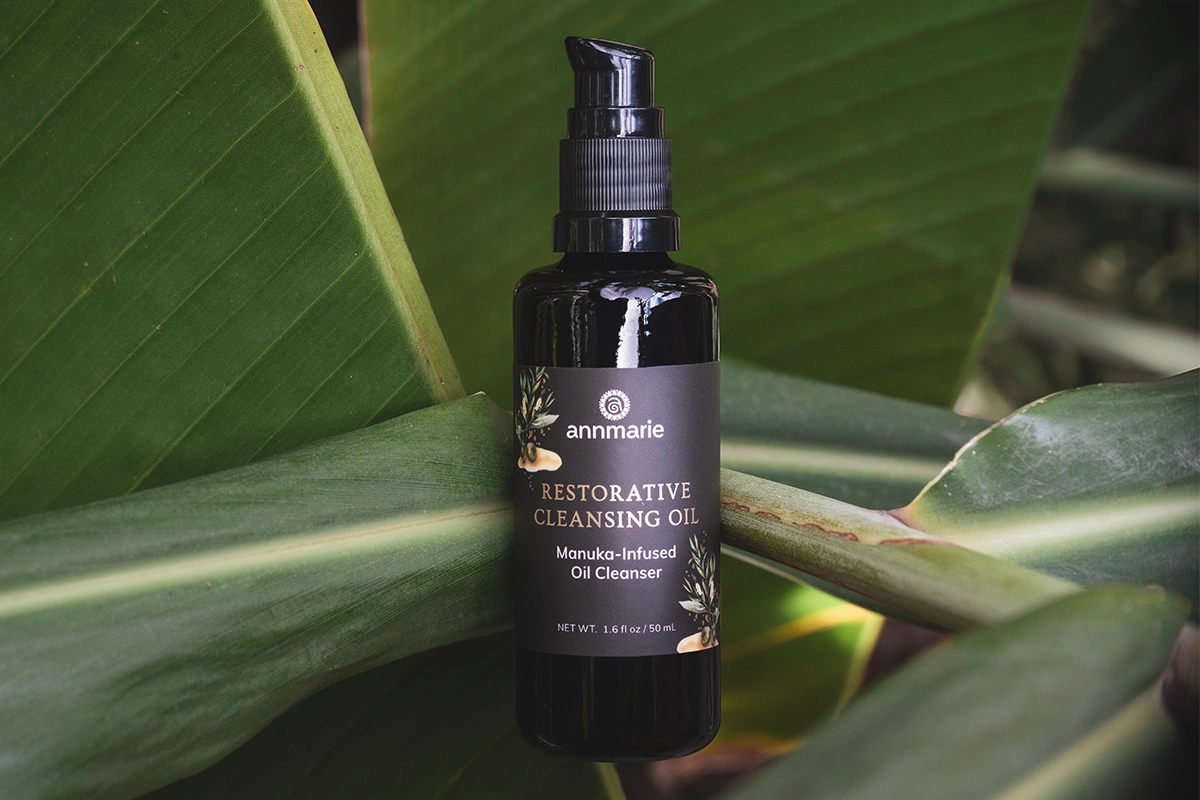
Customer: Can you use it to take off makeup?
Kate – Annmarie Skin Care In-House Esthetician: Yes, absolutely. That’s exactly what I was going to say. It’s great if you do a double cleanse or wear makeup that requires a little more effort to remove. When I use it for makeup removal, I apply it with dry hands on a dry face and let it sit for about a minute—or longer—so it can break everything up. Then I’ll follow with water, a washcloth, or a second cleanser. That’s a great way to get a really thorough cleanse. The Aloe Herb and Phytonutrient Cleansers are both great for removing daily makeup. For example, I’ve just got a bit of concealer and some eyeshadow on today—I'll use the Aloe Herb Cleanser tonight and it’ll take it off no problem. But if I’ve worn heavier makeup, that’s when I do the double cleanse.
Now, if you’re someone who is chronically dry and always trying to boost moisture levels, this might become your go-to cleanser. When you rinse it off, it leaves behind a little bit of oil, which can be ideal for very dry skin. Some people love that dewy finish and don’t feel the need to follow up with another cleanser. Since we had someone mention very dry skin, I wanted to be sure to call this one out—the Restorative Cleansing Oil.
From there, if you’re going to exfoliate or apply a mask, that would come right after cleansing. So I’ll talk about a couple of exfoliants and maybe a mask or two. We’ll see how we’re feeling, and then pause for some questions before moving into the rest of the routine. So when it comes to exfoliation, every skin type can benefit—whether you're dry, oily, or combination. Exfoliating helps remove lingering dead skin cells from the surface, preps the skin for the rest of your routine, and, depending on the exfoliant, can help stimulate the skin’s natural renewal process. I’ll start with this one—our Radiant C Mask & Polish. It comes as a loose, dry powder that looks soft and finely milled. You mix it with a liquid to get the consistency you want. It's called Radiant C because it's packed with vitamin C–rich botanicals like hibiscus, acerola cherry, kakadu plum, and berries.
Customer: Hmm.
Kate – Annmarie Skin Care In-House Esthetician: When this blend is activated with water or any liquid, the vitamin C becomes potent and available to support the appearance of uneven skin tone, discoloration, and texture. I like recommending this one to pretty much everyone—it works well for very sensitive skin, oily skin, and everyone in between. If you mix it with more water, you’ll get a softer, gentler polish, which is great for sensitive skin. Use less water and you’ll get more texture, which can better support oily or congested skin. So you can really customize it to how your skin is feeling. What’s also great is that you can mix it with your cleanser. I personally love it with the Phytonutrient Cleanser, but some people prefer to pair it with the Aloe Herb Cleanser. It’s a great way to stack steps—if you’re short on time, just combine the two. More cleanser gives you a softer polish, and less cleanser gives you a grittier scrub. You can also mix it with other liquids. One of my clients with very oily, congested skin dilutes apple cider vinegar and uses that as a base. Just make sure to dilute it properly—you never want to use ACV directly on your skin. You can even use it as a mask. Just mix with water and apply. It contains gentle clays like French rose clay and another soft, algae-like clay, so it gives you a light tightening and detoxifying effect—without the drying feel of a traditional mud mask. It’s suitable for sensitive or combination skin. And you can get really creative with it. I have clients who mix it with honey, yogurt, even powdered colostrum—so it’s kind of a build-your-own treatment. I saw a question come through—how often should you use it per week? When in doubt, once a week is a good starting point. But because it’s so customizable, you might use it more often. I had a period where I used it with the Phytonutrient Cleanser every other day, and that worked great for me.
Another exfoliant I want to mention is the Kaolin Micro Exfoliant. If I were to ask you to picture a facial scrub, the texture that comes to mind is probably something like this. It’s a creamy base that suspends crushed bamboo stem, and it’s definitely grittier than the Radiant C. This one is great for normal to oily skin types, and also for those who are normal-to-combination. Even those on the normal-to-dry side can benefit—it just gives a deeper exfoliation that helps smooth the skin more directly. It also works beautifully on the body. We don’t currently have a body scrub in our core line—though we’ve had limited-edition ones in the past—so this is my go-to for exfoliating areas like the backs of the arms, especially if you get little bumps or rough texture.
Customer: Really?
Kate – Annmarie Skin Care In-House Esthetician: Yes, it’s a quick and easy way to help smooth things out. That’s the Kaolin Micro Exfoliant. Kaolin clay is one of the ingredients there as well. Again, start with once a week, and if your skin feels good with it, you can consider increasing frequency.
Customer: What about really dry legs?
Kate – Annmarie Skin Care In-House Esthetician: For really dry legs, you can definitely use the Kaolin Micro Exfoliant. Just make sure to follow it up with something hydrating. I’d recommend the Coconut Body Oil. We also have a product called Radiant Skin Silk. Right now, I think Coconut Body Oil is the main one we have in stock. We release other scented body oils seasonally, so it’s worth checking the body care page to see what’s available.
Customer: Okay.
Kate – Annmarie Skin Care In-House Esthetician: Coconut Body Oil—I actually keep that in the shower most of the time. After I finish showering, before I step out, that’s when I apply it to my body—while my skin is still damp. It might sound counterintuitive, since we tend to think oil and water don’t mix, but when the skin is warm and hydrated from the shower, it actually helps the oil absorb more easily. I don’t find that it builds up on my towels or leaves residue at the bottom of the shower. Just be careful not to slip—safety first! But I notice a huge difference when I apply it at that point in my routine.
Customer: Okay.
Kate – Annmarie Skin Care In-House Esthetician: You might give that one a try. Now, one more exfoliant and then I’ll see if we have questions and get into masks. This next one is the most intense. If you know you’re sensitive or reactive, this is not the one to start with. But if your skin is hearty and you like more active products, this is called the Resurfacing Facial Exfoliant.
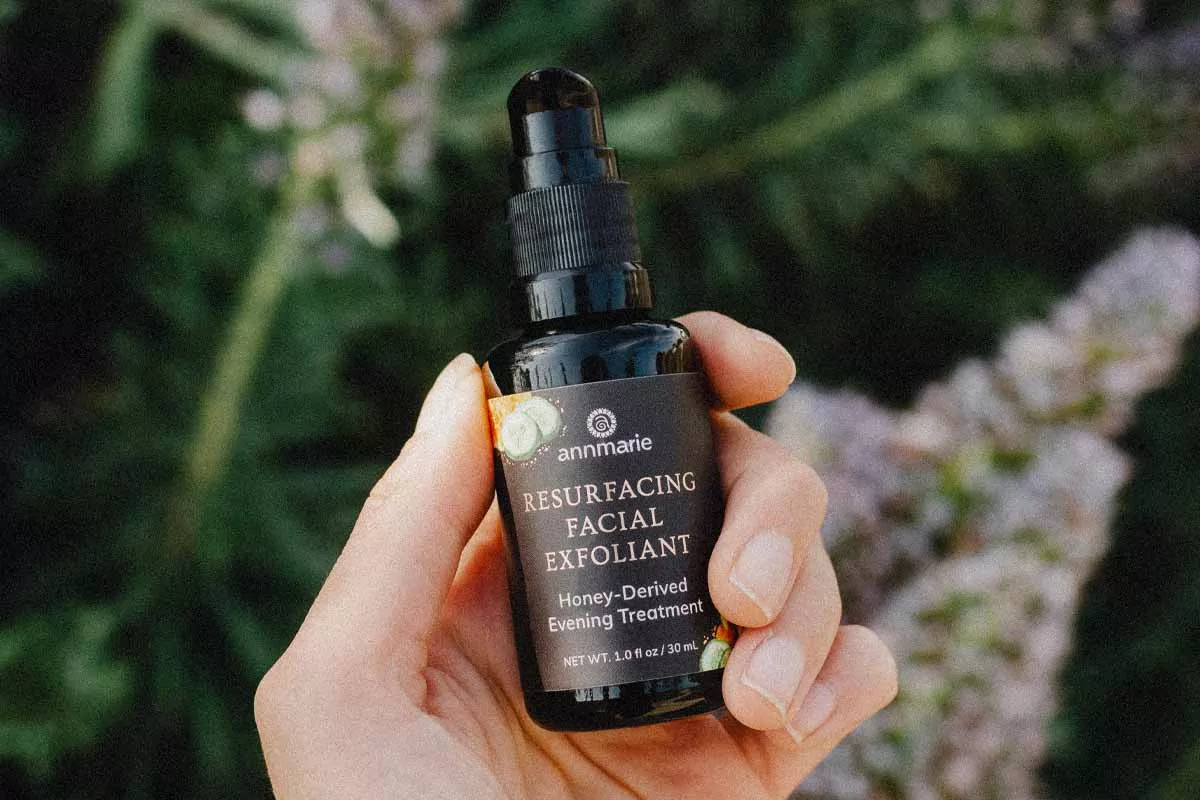
We use honey-derived lactic acid in this one. Lactic acid is what delivers the exfoliating action. The texture feels like a smooth gel—there’s no grit, no scrub, no physical exfoliation. But when applied, the lactic acid gently resurfaces the skin. It’s like a mini, baby version of a peel. I’ll also say that I’ve never had a client peel or flake from this product—it’s just a deeper level of exfoliation. What makes this one really unique is how balanced it is. In addition to the lactic acid, it includes cucumber distillate, blue tansy, and hyaluronic acid—all ingredients that help soothe and hydrate the skin. It’s especially helpful if you’re noticing things like dullness, pigmentation, or visible signs of aging like fine lines. The lactic acid can give the skin a quick plump, which is actually part of how the exfoliation works—it helps the skin feel more full and smooth, and that encourages the older surface cells to slough off. And because it’s paired with soothing ingredients, it doesn’t typically cause irritation or dryness like some peels can.
Customer: Okay.
Kate – Annmarie Skin Care In-House Esthetician: So I’ll pause there and check in—any questions on the exfoliants before we move on to masks?
Customer: Yeah, so that last one—the lactic acid exfoliant—wouldn’t be something I’d start with, right? I’m really sensitive. So would there ever be a point where I could use it? How would I know when I’m ready?
Kate – Annmarie Skin Care In-House Esthetician: Great question. With your skin type, I would say first—you're new to the line, right?
Customer: Yes, I’m very new to the line.
Kate – Annmarie Skin Care In-House Esthetician: Okay, then I’d definitely recommend starting with some of the gentler products first. Something to be aware of when you’re just starting with a new line—especially with sensitive skin—is that there may be a short adjustment period. Our products are formulated with high antioxidant content. We use ingredients like superoxide dismutase, astaxanthin, sea buckthorn berry—some of these you don’t need to know in detail, but they’re all very antioxidant-rich. That can sometimes create a transitional phase where the skin feels a bit drier or more sensitive, particularly in thinner areas like around the nose, the sides of the mouth, or the chin. This usually happens within the first two weeks and isn’t typically uncomfortable. Some people might notice small white bumps, but it’s not like a full breakout. Of course, an allergic reaction is possible with any skincare, but what I’m describing is more of an adjustment phase. So I’d say, first focus on getting your skin used to the products. Once you feel like you’ve found a good flow and everything’s working well—no irritation, no issues—then you can consider introducing this exfoliant. When you're ready, you could start by applying it only to areas that are less reactive, like the nose or forehead. See how your skin responds. If everything feels good, then try applying it to the full face. You can also modify the wear time. It’s designed to be worn like a mask—just apply and let it sit—so you could start with just three minutes instead of ten and slowly work your way up from there.
Customer: Right. Okay, cool. Thank you.
Kate – Annmarie Skin Care In-House Esthetician: Mm-hmm. Any other questions about the scrubs before we move on to masks? Okay, I’m going to start with this one—this is the Illuminating Pearl Mask. And for Vero’s iPhone, this is an incredible product if you’re looking to boost radiance in your skin. Let me see if the camera picks it up—sometimes the light catches it, sometimes not. But one of the active ingredients is crushed pearl powder, which gives it this beautiful luminous effect. It also includes brightening botanicals like uva ursi and licorice root, along with soothing ingredients like honey and turmeric. So it's a great option if you’re looking to even the appearance of your skin tone while giving your skin a natural glow. It’s especially lovely if you have an event coming up—family photos, a wedding, or even if you just want to look fresh and radiant for your everyday life. It’s very gentle and works well for almost every skin type. As for how often you can use it—the instructions say about 15 minutes, once a week. But honestly, you can leave this on much longer. I have customers who wear it for hours while working from home or doing a workout. I even have a few who sleep in it, though I personally don’t love the sticky honey feel on my pillowcase. But it’s safe to wear that long if it works for you. This is also one I like to use under the eyes on tired mornings—just a little bit before hopping in the shower. It gives the under-eye area a brighter, more refreshed look. You can also apply it just to certain areas of the face, like the lips or the brow bone, or use it all over. It pairs beautifully with the Radiant C Mask.
Customer: Mm.
Kate – Annmarie Skin Care In-House Esthetician: Now, another mask I absolutely love is the Coconut Honey Mask. The texture of this one is rich, emollient, and deeply moisturizing. As the name suggests, the key ingredients are organic virgin coconut oil and raw wildflower honey sourced from the mountains in Colorado. This is a go-to for dry or rough-textured skin—especially in the winter. It’s my rescue product. When my skin feels like it’s doing everything right but still needs extra help, I’ll use the Coconut Honey Mask once or twice a week to really replenish it. It helps lock in hydration and soothe any rough patches. Like the Illuminating Pearl Mask, this one can be worn for a long time—even overnight if you don’t mind the stickiness. It’s great to wear in a sauna too, or anytime your skin needs that extra moisture boost.
Customer: That would be good for me in the wintertime for sure.
Kate – Annmarie Skin Care In-House Esthetician: Mm-hmm. Yeah, if you tend to get dry, that one’s a hero product.
Customer: Oh, super dry.
Kate – Annmarie Skin Care In-House Esthetician: Yeah, then that one is perfect—it’s like a rescue for extremely dry skin. One more mask I’ll briefly touch on—it may or may not be relevant depending on your skin types—but I want to call it out. It’s called the Charcoal Cacao Mask.
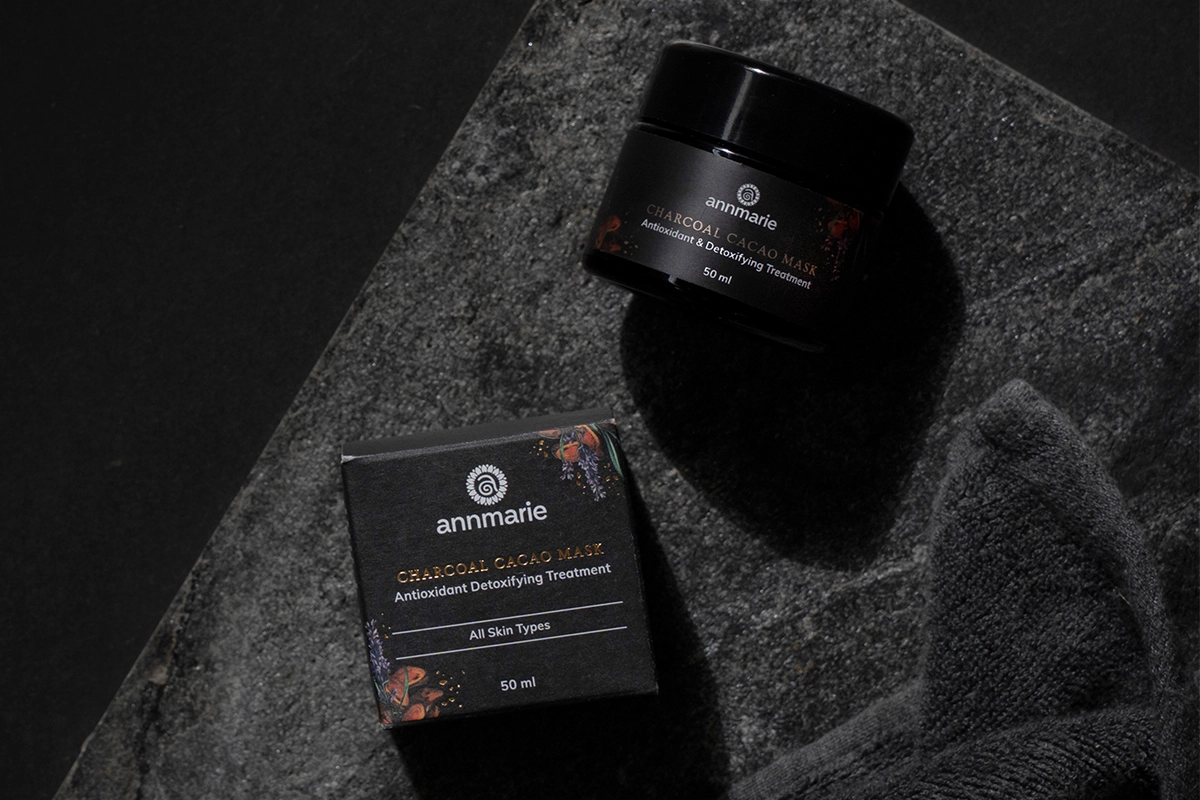
Customer: Mm-hmm.
Kate – Annmarie Skin Care In-House Esthetician: This one is jet black—it’s definitely a statement mask. It’s ideal for combination or congested skin. The cacao offers antioxidants and softening properties, while the charcoal helps draw impurities to the surface. It also contains turmeric for additional skin-supportive benefits. If your skin is feeling clogged or you’re looking to bring things into balance, this is a great option. It’s also rich in antioxidants, so it offers that protective boost too. But just a heads up—it’s very dark, so I recommend rinsing it in the shower or using towels you don’t mind getting charcoal on. Let’s pause here—are there any questions? You can come off mute or pop them into the chat. I want to make sure everyone feels supported. Seeing nothing for now—so I’ll keep going.
So, we’ve covered cleansing. You’ll exfoliate about once a week, and masking can also be once a week. You don’t have to exfoliate and mask on the same day—you absolutely can if it’s easier for you to bundle your routine, but it’s not required. Just do what fits your rhythm. On days you’re not masking or exfoliating, you’ll cleanse and then follow up with your toning mist. I’m going to walk through two of our toning mists. This step is a hydrating, nutrient-dense burst that also works as a primer for your serum and moisturizer. It actually changes the way your serum spreads and absorbs, and I’ll explain more about that. The first one is our Neroli Toning Mist. This is a classic—very lightweight and super simple in formulation. It starts with aloe vera juice, and the hero ingredient here is neroli essential oil. Neroli is especially known for its ability to support the appearance of fine lines. Aloe is soothing and helps bring balance to the skin. I typically recommend this toning mist for combination skin, for people whose skin shifts between needs, or for those in the normal-to-oily range who also want to address fine lines.
Customer: Hmm.
Kate – Annmarie Skin Care In-House Esthetician: The next one is part of our Wild Alchemy Collection, and you’ll notice it comes in a larger size. This is the Botanical Hydration Mist with Immortelle. It’s a completely different formulation. Instead of aloe vera, it starts with two hydrosols: rose and immortelle. Hydrosols, by the way, are a byproduct of essential oil distillation. They’re like the watery runoff that still carries some therapeutic properties of the plant—lighter than essential oil, perfect for misting, and deeply hydrating. So these hydrosols are already going to bring more moisture to the skin than aloe alone. That’s why I love this one for dry skin. The rose and immortelle florals also help soften the appearance of fine lines and support resilience in the skin—adding a supple, “bounce-back” feel. What’s even better: this mist also includes four different types of chamomile and some frankincense, all chosen to help soothe skin. If you have dry, aging, or sensitive skin—or deal with things like temporary redness—this is a go-to. I have a coworker who keeps one in her purse at all times. She says if she goes to a Mexican restaurant or anywhere she knows might trigger her rosacea, this comes out. It’s also one of those products I have customers subscribed to—people who use the full line but never want to be without this.
Customer: Botanical Hydration Mist?
Kate – Annmarie Skin Care In-House Esthetician: Yes—Botanical Hydration Mist with Immortelle. That’s the one. For my own skin, I tend to be normal to dry, and sometimes sensitive. This is the one I use every day. I always keep a backup—it just feels so good on the skin. To apply, you’ll just mist it on the skin using the spray top. You want the skin to be nice and damp—not dripping wet, but evenly misted. The number of pumps you use and how far you hold the bottle will depend on what feels good to you. All of our serums include some form of humectant—things like hyaluronic acid or tremella mushroom. These are ingredients that draw moisture from the environment and bind it to the skin. When you already have moisture on your skin from the toning mist, your serum has more to work with—it can pull in that hydration and help plump and hydrate more effectively. After misting, you can choose to apply your serum and facial oil while your skin is still damp, or wait until your skin is dry. One way isn’t better than the other—it just depends on preference. Personally, I like applying everything while my skin is damp. It helps the products spread more easily, and I find I need less product because of that slip. I also feel like the hydration is pulled deeper into the skin as everything absorbs together. For those new to using facial oils—especially if you’ve struggled with them feeling heavy or sitting on top of the skin—try applying when the skin is still damp from your toning mist. It helps everything absorb more fully and gives a dewier finish.
Any questions about the toning mists or that step of the routine?
Okay, cool. I can never tell if I’ve got a quiet group or if I’m just being very thorough and everyone’s getting their questions answered. Let’s move into serums.
So your serum step—this is true for our products and also true generally across skincare—is where you’ll see the most treatment-focused action. Serums tend to have a thinner consistency, absorb more quickly, and are formulated to deliver concentrated active ingredients into the skin. This is where we target concerns like fine lines, discoloration, dehydration, or sensitivity. Serums are where we really start to elicit change. Take stem cells, for example. Plant stem cells are used in some of our formulas to support a lifted, firmer appearance. They’re absorbed into the skin and help signal rejuvenation. As your skin cells turn over, they start to mimic the qualities of the stem cells—this is where we see more resilience, more tautness. Likewise, brightening serums include ingredients that either seek out pigmentation to reduce its appearance or help brighten the overall skin tone. So this step is your opportunity to zero in on your priorities. Let’s go through some of our serums.
The Anti-Aging Serum is a classic. It comes in two sizes because it’s one of our most loved products. The main features are floral botanicals like rose, edelweiss, and life everlasting, which can help strengthen the skin and improve bounce-back. But the hero ingredient here is hyaluronic acid—it delivers a quick, visible plump. People often notice the fuller, more hydrated look of their skin almost right away. It’s great for aging skin, dry skin, or combination skin—especially if your skin tends to shift with the seasons.
Next is the Citrus Stem Cell Serum.

This one focuses on two things: lifting the skin and fading the appearance of pigmentation. It does contain hyaluronic acid, but not as much as the Anti-Aging Serum, so it’s not as hydrating. If you’re both dry and have discoloration, there’s another serum that may be more helpful—but for pigmentation and firmness, this one is excellent. The brighteners in here—like uva ursi, licorice root, and berry extracts—are tyrosinase inhibitors. They don’t bleach the skin. Instead, they work on overactive pigment areas and help fade those over time. And then the orange-derived stem cells work to lift and firm. If someone is working on the appearance of dark spots, I’ll sometimes suggest applying this one first just to those areas, and then layering another serum over it. I don’t often recommend layering serums, but this is one of the few where layering—or alternating—is worth considering.
The next is the Probiotic Serum with Tremella. I thought of this one earlier for someone who mentioned perioral irritation. It includes a probiotic complex and an olive leaf ferment, both of which help support a healthy skin microbiome—just like your gut, your skin has a community of good bacteria. This serum helps nurture that. It’s also incredibly hydrating thanks to the tremella mushroom, which functions similarly to hyaluronic acid. It’s very gentle, very balancing, and a great choice for anyone with reactive or easily irritated skin.
Now for the serums in our Wild Alchemy Collection. The Wild Fruit Serum is an all-around serum for addressing signs of aging. It includes uva ursi for brightening, sea plum (a vitamin C-rich fruit) to improve overall tone and texture, hyaluronic acid for hydration, and plant-derived stem cells from Madonna lily to support firmness. It also contains resveratrol, a powerful antioxidant that helps smooth the look of the skin and enhance absorption of other ingredients. This one is great for combination aging concerns—if you’ve got both discoloration and fine lines, or loss of firmness along with dullness, this is your multi-tasker.
Next is the Activated Hemp Serum. This one has a creamy texture and is packed with broad-spectrum hemp oil. It includes cannabinoids like CBG and CBN (but no THC) that work with your skin’s endocannabinoid system. That’s your skin’s internal system for assessing where support is needed—whether that’s calming inflammation, restoring balance, or soothing irritation. This serum is deeply hydrating, calming, and a great choice for dry, mature, or sensitive skin types—especially if you’re dealing with temporary redness.
The last serum I’ll touch on is the Activated Night Serum. Everything I’ve mentioned so far can be used morning or night. This one is specifically designed for evening use. It includes a bioactive A—our plant-based alternative to retinol. It’s a made-safe ingredient that works similarly to retinol in terms of results, but without the potential sensitivity or thinning of the skin barrier. This serum targets large pores, blackheads, and signs of aging like pigmentation and fine lines. Even though it’s gentler than traditional retinol, we still recommend avoiding sun exposure right after use. So this is best reserved for nighttime. It’s meant to be used nightly, but depending on your skin type, you might choose to use it every other night or a few nights a week. Personally, I do about three nights on, then take a few nights off. Some people use it every night, and some do best with every other.
Okay—I’ll pause here. Next up are our boosters, but before I jump in, I want to check in on any questions. Laura, I think you had one?
Customer: I kind of got distracted—my dogs were bothering me. You were talking about the night serum. Why is that one only for nighttime?
Kate – Annmarie Skin Care In-House Esthetician: Good question. The active ingredient in that serum is called bioactive A, and it gently exfoliates the skin. If you apply it and then go out into the sun, it can increase your skin’s sensitivity to UV exposure and potentially increase the risk of sun damage. That’s why it’s formulated specifically for nighttime use.
Customer: Gotcha. Thank you!
Kate – Annmarie Skin Care In-House Esthetician: Yeah! Now let me quickly walk through these—this is our set of Concentrated Boosting Elixirs. These are actually the giveaway today. If you’re purchasing the Restorative Facial Cream, which I’ll talk about again in just a moment, we’re going to send you this trio for free. The set includes three concentrated boosters that you can mix into your serum, oil, or cream to customize your routine even further. There’s Hydrate, which contains hyaluronic acid and peptides. Then Brighten, which is a shelf-stable, non-petroleum-derived vitamin C. And finally, Revitalize, which is a concentrated dose of the same bioactive A found in the Activated Night Serum. These are designed to be mixed into another product—not used directly on their own. They’re very concentrated and not formulated to be worn solo, especially Brighten and Revitalize. They can feel too strong or even irritating if applied directly to the skin, and we do occasionally get feedback from folks who tried them that way. So the proper way to use them is to pump your serum or oil into the palm of your hand and then add 1 to 3 drops of your chosen booster. Mix and apply from there.
Customer: Can you mix all of them together?
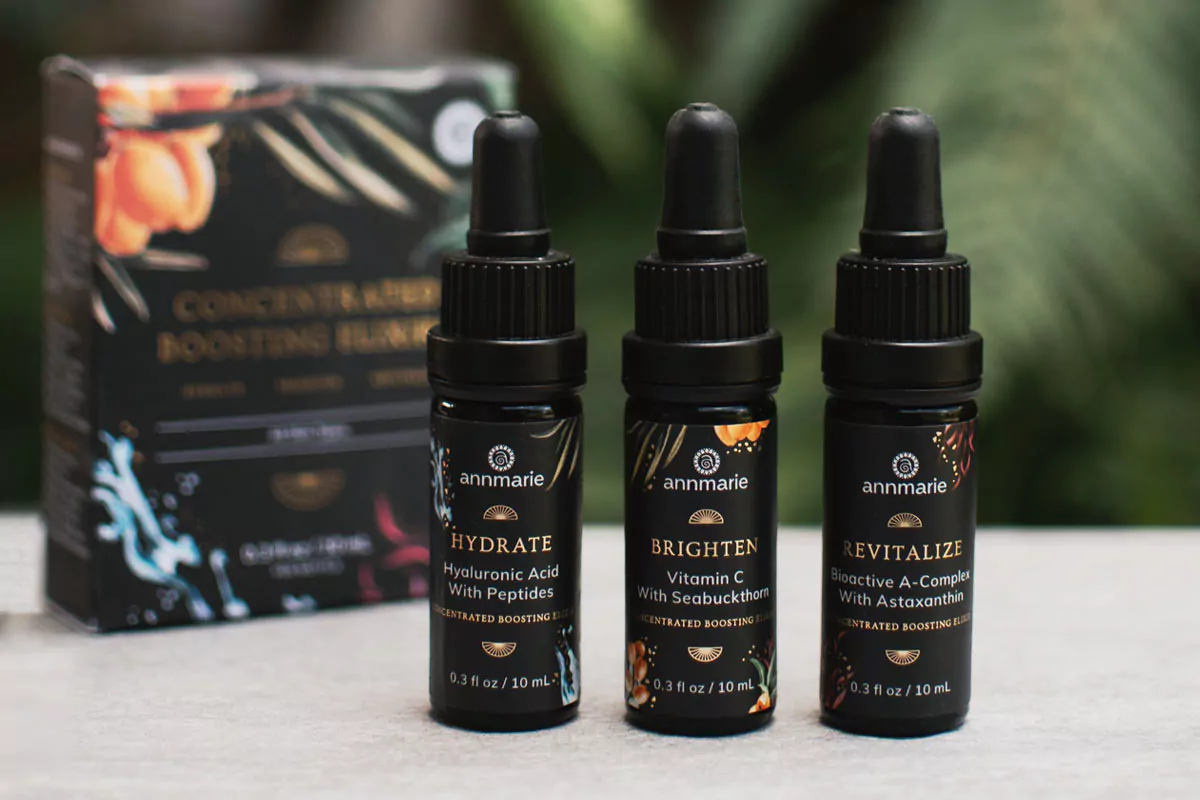
Kate – Annmarie Skin Care In-House Esthetician: Great question. You can use more than one, but there are a few guidelines. Revitalize—for the same reason we only use the Activated Night Serum in the evening—should only be used at night. Brighten and Revitalize should not be used together because they tend to cancel each other out. So what most people do is use Brighten in the morning and Revitalize in the evening. You could technically use Brighten at night too—just skip Revitalize if you do that. And Hydrate plays well with either. It can be used day or night and mixed with either of the other two.
Customer: Right. I was asking about the vitamin C one—how is it different from the Wild Fruit Serum?
Kate – Annmarie Skin Care In-House Esthetician: Ah, good distinction. So Brighten is a concentrated booster. It’s not a serum. It’s not formulated to be used alone and doesn’t contain the full spectrum of ingredients that a serum does. Wild Fruit Serum, on the other hand, is a full-bodied serum with multiple brightening ingredients, including vitamin C, along with hydrators, stem cells, and antioxidants. So if you’re looking for a complete treatment step, go with Wild Fruit. If you’re layering or boosting an existing serum or cream, Brighten is your tool. Okay, we’re getting close to the end of our time together, but I want to wrap up with the final step in the routine: moisturizer.
We have both a facial cream and facial oils, and I’ll speak to both. Starting with the cream, this is our Restorative Facial Cream. The consistency is so rich and luxurious, yet it wears with a really soft, almost powdery finish—it’s not greasy. It’s packed with ceramides, plant butters, and antioxidants, so it’s deeply hydrating while still feeling lightweight on the skin.
We created this formula for those who may not feel comfortable using facial oil. Even though it’s rich, it feels light once applied. When we first launched it, I actually thought it would be better suited for oilier skin types—but I have dry, sensitive skin, and I absolutely love it. My skin feels supple and supported. You can use this cream on its own, or you can mix in a couple of drops of oil. I often mix mine.
Now, if you prefer oils, the Anti-Aging Facial Oil is a wonderful option. It’s jojoba-based and infused with restorative herbs that support the look and feel of revitalized skin. This one will feel more like a traditional facial oil—it’s nourishing, rich, and gives that beautiful dewy glow. Today, I mixed a drop of oil into the cream, so my skin has a more matte finish than usual, but still very hydrated.
If your skin is on the very dry side, go for the Anti-Aging Facial Oil. But if your skin leans more combination, I recommend the Herbal Facial Oil for Normal & Combination Skin. It’s a bit lighter—it’s grape seed oil-based—and it’s great for balancing oil production. It supports skin that fluctuates, helping keep everything in balance without feeling heavy.
Finally, let’s close with Sun Love, our non-nano zinc oxide sunscreen. This is your last step in your morning routine. I love this one because it sheers out beautifully and doesn’t leave a heavy white cast. It’s designed to protect the skin from UVA and UVB rays, and it’s a critical part of maintaining all the work you’re doing with your skincare. We want to shield your skin from sun damage while preserving the benefits of everything else. So that’s the complete routine. Of course, you can add in an eye cream or lip product—but I’ll stop here and open it up for any final questions before we close out.
Customer: I don’t think I have any right now.
Kate – Annmarie Skin Care In-House Esthetician: Okay! We might’ve covered everything already!
Speaker 4: You’re really good—very thorough.
Kate – Annmarie Skin Care In-House Esthetician: Thank you! I’m dropping our customer support email in the chat. If you’re shopping and have questions, you can reach out to our team—Alexandra or Katie are super quick to respond. Or if you’re having trouble with the coupon code or just not sure what to get, don’t hesitate to ask. We never want tech issues to stand in the way of your experience.
Customer: You went through a lot of products. What would be your one recommendation in each category—like your go-to for anti-aging?
Kate – Annmarie Skin Care In-House Esthetician:
Yes, happy to share. For cleanser, I’d go with the Phytonutrient Cleanser. It’s nourishing but effective. For exfoliation, I’d choose the Resurfacing Facial Exfoliant. Just be mindful—it's more intense, so consider your skin’s sensitivity. As for toning mist, my favorite is the Botanical Hydration Mist. When it comes to serums, I recommend the Wild Fruit Serum for the morning and the Activated Night Serum in the evening. If that price point feels like too much, the Wild Fruit Serum combined with the Revitalize booster can be a great alternative—it gives you the same active ingredient found in the Activated Night Serum. For moisture, I suggest using the Restorative Facial Cream and mixing it with a few drops of the Anti-Aging Facial Oil. There's something about that oil that keeps the skin feeling so supple—it really supports that plump, radiant look over time. If we had more time, I’d also talk about the Anti-Aging Eye Cream, which is another great addition. And don’t forget Sun Love as the last step in your routine to protect all the work you’re doing on your skin.
I’d also include the Anti-Aging Eye Cream if we had more time to dive into it.
Customer:
Awesome, thank you so much. One last thing—I noticed this was recorded. Will we get a copy?
Kate – Annmarie Skin Care In-House Esthetician: We don’t send out full recordings, but we do use them to create written transcripts and blog content. The video itself gets deleted. I’ll check on whether I can send you a transcript—sometimes that gets approved, sometimes not. In the meantime, you can always check out our blog or YouTube channel. We post clips and answer lots of questions there.
Customer: Okay, thanks. You were so helpful—I wish I had taken notes!
Kate – Annmarie Skin Care In-House Esthetician: I totally understand! If I can get you that transcript, I’ll try. But check the blog, too—many of the tips will show up there.
Customer: Final question—do you really think you’ll see a difference in a week or two?
Kate – Annmarie Skin Care In-House Esthetician: It depends on what you're working on. If you're focusing on hydration and plumping—like with hyaluronic acid—you’ll likely notice a difference within the first week or two. The skin often looks fuller and more hydrated pretty quickly. For things like fading pigmentation or improving firmness, those changes happen deeper in the skin, so they can take 4 to 12 weeks depending on your skin type and the issue. Most people notice a difference in how their skin feels and looks within 8 weeks of consistent use.
Customer: That makes sense. Thank you. Oh, and one more thing—we touched on it briefly earlier. What’s good for that loose, sagging skin under the neck?
Kate – Annmarie Skin Care In-House Esthetician: Ah yes—what I like to call the “turkey neck.” The gua sha tool is amazing for that. It helps stimulate and tone the fascia in that area. I also love our Radiant Skin Silk—it’s a body lotion, but I recommend it for crepey skin, including under the chin or on the neck. You can also use it on the arms or other areas that are feeling thin or textured. It’s a lotion, so it absorbs quickly—no oily residue or waiting around.
Customer: Okay, perfect. I remembered it as soon as I saw myself on camera!Kate – Annmarie Skin Care In-House Esthetician: I’m so glad you brought it up! I’ve loved having you all on this call. I’m going to close it out, but feel free to email support if you need anything—or if you’d like them to pass your message directly to me, they’ll do that too.
Want to join us for our next skin consultation? (It's totally free!)

Our team of experts has been on a mission to inspire beauty, health, and wellbeing, and we believe there's no better way to do this than through directly sharing our knowledge and passion for natural skin care.
Join us for a live session with one of our licensed estheticians where we'll explore the power of organic, bioactive ingredients, how they interact with your unique skin type, and how to incorporate them into your routine for optimal benefits. You'll walk away from this consultation feeling empowered to make informed decisions for your skin's health. Our in-house skin experts are eager to answer your questions, dispel myths, and share tailored advice for each participant.
By signing up for our live consultation, you'll not only gain access to the latest insights in organic skin care, but also receive exclusive skin care deals only available to those who attend! We can't wait for you to join our community as we share our love for organic skin care with you!
HOW TO SIGN UP
1. Simply, click the button below to sign up for the day that works best for you and your skin type.
2. Select your desired date and time, and click “Next”
3. Enter your contact information (your name and email), and click “Schedule Event.”



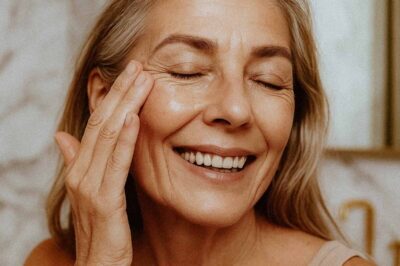


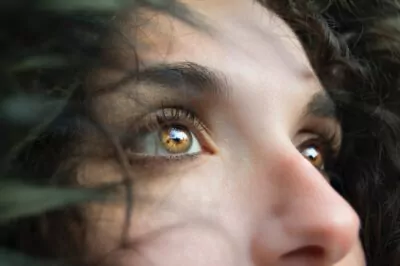
Leave a Reply